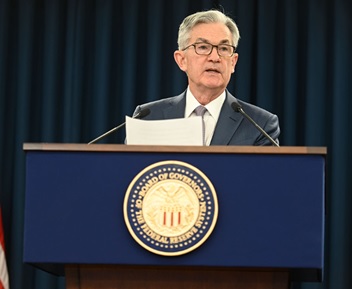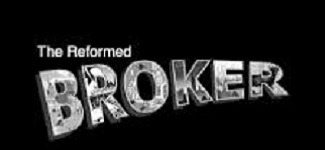- Support to banks that make loans to small business
- Buying more assets including municipal bonds and high-yield exchange traded funds (ETFs)
- Loans directly to states and municipalities
U.S. Federal Reserve has certain limitations as it only has lending power and can only make secured loans to solvent entities and expect the loans will be fully repaid. The U.S. Federal Reserve does not have spending powers and cannot give money to particular beneficiaries.
After the announcement, the DJIA was up 286 points (1.2%) on the day, the S&P 500 closed up almost 40 points (1.5%) and the NASDAQ closed virtually unchanged, up only 63 points (0.8%).
U.S. Federal Reserve
This is in addition to what the U.S. Federal Reserve has already done, including:
- In early March, they lowered interest rates to near zero and committed to keeping rates at a low level until the economy recovers.
- In order to help keep credit liquidity in the market, they have supplied more than $1 trillion to purchase Treasury and mortgage-backed securities.
Brookings Institute Interview with Jerome Powell

On the same day, the Brookings Institute hosted Jerome (Jay) Powell, the Chairman of the U.S. Federal Reserve to discuss COVID-19 and the impact on the economy.
Jay Powell made a number of remarks relevant to the current economy and potential re-start:
- “The challenge we face today is different in scope and character from those we’ve faced before.”
- “This is first and foremost a public health crisis and the most important response is coming from those on the front lines in hospitals emergency services and care facilities.”
- “The critical task of delivering financial support directly to those most affected falls to our elected officials who use their powers of taxation and spending to make decisions about where we as a society should direct our collective resources.”
- “The Fed can also contribute in important ways by providing a measure of relief instability during this period of constrained economic activity and by using our tools to ensure that the eventual recovery is as vigorous as possible.”
- “We’ve now announced, I think, nine different facilities and those [facilities] really are the priority areas where we thought that help was needed as we identify other areas we won’t hesitate to move into those areas.”
Economic Recovery Timing
When asked about the timing of the economic recovery, Chairman Powell believes that the timing is not an economic question but it really depends on how quickly the various levels of governments can get it under control so that they are able to reopen the economy safely.
With all of the businesses shut down, Chairman Powell expects a very weak second quarter, with large increases in initial unemployment claims and a high unemployment rate. However, he believes a “fairly quick” rebound will happen as people get back to work and expects this rebound to happen in the second half of this year, after June 30.
Chairman Powell also commented on the U.S. banks paying dividends and does not think that is something that needs to be addressed now. He think the U.S. banks are highly capitalized, with more high-quality capital than they were before the financial crisis in 2008-09, and does not see a dividend cut as appropriate at this time.
Here is the Video of the Brookings Institute speech:
In addition to the Federal Reserve actions, the U.S. government has already passed three laws providing support during the coronavirus crisis totaling over US$2.3 trillion dollars. The laws included money for coronavirus research, paid sick leave and unemployment benefits, and direct payments to Americans, loans for major industries, and money for small businesses.
Only time will tell if all of this stimulus and market liquidity will keep the U.S. from a short-term recession or depression and not cause longer-term fiscal problems.
//




